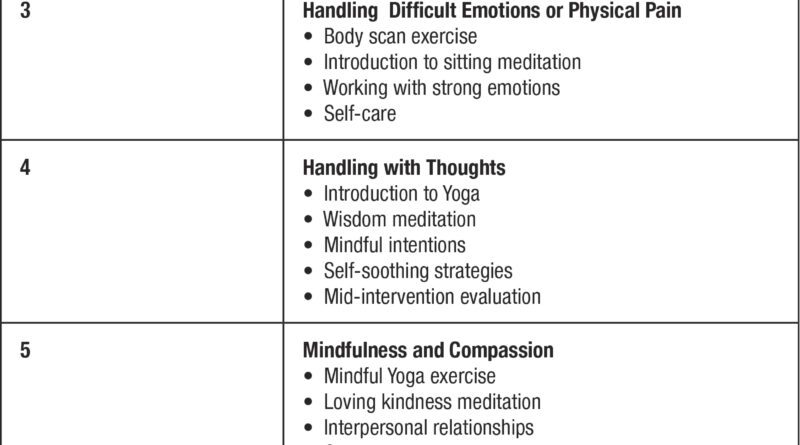Mindfulness-Based Stress Reduction: A Solution For Chronic Pain
Have you ever experienced chronic pain? If so, you’re not alone. Many people suffer from chronic pain, whether it’s due to an injury, a medical condition, or simply the stress and strain of everyday life. But what if there was a way to reduce the impact of chronic pain on your life? One possible solution is mindfulness-based stress reduction.
Mindfulness-based stress reduction, or MBSR for short, is a practice that combines mindfulness meditation, yoga, and other techniques to help individuals manage their stress and reduce the impact of chronic pain. By learning to be fully present in the moment and accepting the sensations and emotions that arise, individuals can develop a greater sense of control over their pain. Studies have shown that MBSR can be an effective tool in managing chronic pain, with participants reporting reduced pain intensity and improved overall quality of life.
In this article, we’ll explore the principles behind MBSR and how it can be used as a solution for chronic pain. We’ll delve into the various techniques and exercises used in MBSR, and we’ll discuss the scientific evidence supporting its effectiveness. Whether you’re someone who suffers from chronic pain or you’re simply interested in exploring new ways to manage stress, this article is for you. So, get ready to learn more about mindfulness-based stress reduction and how it can potentially change your life for the better.

What is Mindfulness-Based Stress Reduction (MBSR)
Mindfulness-Based Stress Reduction (MBSR) is a program developed by Jon Kabat-Zinn in the late 1970s at the University of Massachusetts Medical School. It is a structured eight-week training program aimed at reducing stress and promoting overall well-being. MBSR combines mindfulness meditation, body awareness, and gentle yoga to help individuals manage their physical and emotional challenges.
Benefits of mindfulness-based stress reduction for chronic pain patients
Chronic pain is a debilitating condition that affects millions of people worldwide. It can significantly impact a person’s quality of life, making simple daily tasks difficult to accomplish. Traditional medical treatments often focus on pain management through medication, but they may not address the underlying causes or provide long-term relief.
MBSR has shown promising results as a complementary approach for chronic pain management. It offers a holistic solution by addressing the physical, psychological, and social aspects of pain. By learning to cultivate mindfulness and practice various techniques, chronic pain patients can experience several benefits.
MBSR explained: techniques and principles
MBSR incorporates various techniques and principles that help individuals develop mindfulness skills and reduce stress. The program typically includes guided meditation practices, body scans, gentle yoga, and group discussions. These elements work together to cultivate present-moment awareness, non-judgmental acceptance, and compassion.
Mindfulness meditation involves focusing your attention on the present moment, such as your breath or bodily sensations, while observing any thoughts or emotions that arise without judgment. Body scans are a practice where individuals systematically explore and bring awareness to different parts of their body. This helps cultivate a deeper connection between the mind and body, promoting self-awareness and relaxation. Gentle yoga combines mindful movement with breathing exercises to promote physical well-being and reduce tension in the body.
Research and evidence supporting the efficacy of MBSR for chronic pain management
Numerous studies have been conducted to evaluate the effectiveness of MBSR for managing chronic pain. Research has consistently shown positive outcomes in reducing pain intensity, improving physical functioning, and enhancing overall well-being.
A 2014 study published in the Journal of the American Medical Association examined the effects of MBSR on individuals with chronic low back pain. The results showed significant reductions in pain severity, functional limitations, and symptoms of depression compared to a control group receiving standard medical care.
Another study published in the Journal of Pain in 2016 evaluated the long-term effects of MBSR in patients with fibromyalgia, a chronic pain condition. The findings revealed that participants who completed the MBSR program experienced continued improvements in pain symptoms, physical function, and quality of life even six months after the intervention.
These and other studies provide promising evidence for the effectiveness of MBSR in alleviating chronic pain and improving overall well-being.
Understanding Chronic Pain
Defining chronic pain and its impact on daily life
Chronic pain is characterized by persistent pain that lasts for longer than three months and can significantly impact a person’s physical and emotional well-being. Unlike acute pain, which serves as a warning sign of injury or illness, chronic pain persists even after the initial cause has healed. It can affect various parts of the body, including the joints, muscles, or nerves.
Living with chronic pain can be challenging, as it can interfere with daily activities, work, social relationships, and even mental health. It can lead to feelings of frustration, hopelessness, and isolation. The constant pain can also disrupt sleep patterns, reducing the person’s overall quality of life.
Common causes of chronic pain
Chronic pain can have various underlying causes. Some common conditions that can result in chronic pain include arthritis, fibromyalgia, neuropathy, migraines, and back problems. In some cases, chronic pain may arise without a known cause, making it difficult to treat. It is essential to work closely with healthcare providers to identify the cause of the pain and develop an appropriate treatment plan.
The biopsychosocial model and its relevance to chronic pain
The biopsychosocial model suggests that chronic pain is influenced by biological, psychological, and social factors. It recognizes that pain is not solely a physical sensation but is also influenced by individual perceptions, emotions, thoughts, and social interactions.
In the context of chronic pain, this model emphasizes the importance of considering the biological factors contributing to pain, such as tissue damage or inflammation, as well as psychological factors like stress, anxiety, and depression. In addition, social factors such as support systems and access to healthcare play a significant role in the experience and management of chronic pain.
Understanding the biopsychosocial model is crucial for developing comprehensive pain management strategies and tailoring treatment plans that address all aspects of a person’s well-being.
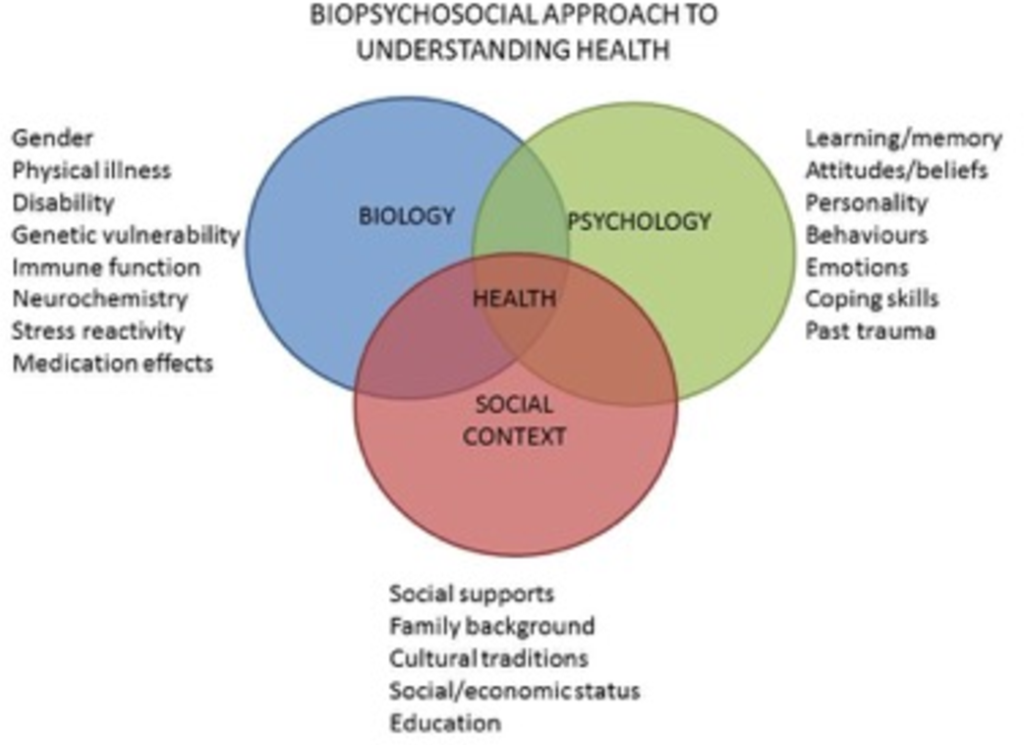
The Link Between Stress and Chronic Pain
Stress as a contributing factor to chronic pain
Stress has long been recognized as a contributing factor to the development and exacerbation of chronic pain. When we experience stress, our bodies respond by releasing stress hormones, such as cortisol, which can increase inflammation and amplify pain signals in the body.
In addition, chronic stress can cause muscle tension and stiffness, leading to increased discomfort and pain. It can also affect sleep quality, promote unhealthy coping mechanisms, and exacerbate feelings of anxiety and depression, further impacting pain perception.
The stress-pain cycle and its implications
Chronic pain and stress often create a vicious cycle, with each amplifying the other. The experience of pain can be stressful in itself, leading to increased tension and anxiety. This, in turn, can heighten pain perception and trigger further stress.
The stress-pain cycle can become self-perpetuating, making it challenging to break free from the cycle and find relief. This is where mindfulness-based stress reduction techniques can offer significant benefits by interrupting this cycle and promoting relaxation and self-regulation.
The role of chronic stress in exacerbating pain perception
Chronic stress can have a significant impact on how we perceive pain. When we are under stress, our bodies go into a heightened state of alertness, focusing on the perceived threat. This can increase pain sensitivity and make even mild discomfort more pronounced.
Additionally, chronic stress can affect the brain’s pain-processing areas, altering pain perception. It can also lower pain thresholds, resulting in an increased sensitivity to pain stimuli.
By managing chronic stress through mindfulness practices, individuals can reduce the impact of stress on pain perception and learn to respond to pain in a more adaptive and self-compassionate way. This can lead to a significant reduction in overall pain levels and an improved quality of life.
Introduction to Mindfulness
What is mindfulness and its origins
Mindfulness is the practice of intentionally bringing one’s attention to the present moment in a non-judgmental and accepting way. It involves paying attention to one’s thoughts, sensations, and emotions without getting caught up in them or trying to change them.
The concept of mindfulness has its roots in ancient contemplative traditions, such as Buddhism. In recent decades, it has gained significant attention in the fields of psychology and medicine due to its potential to promote overall well-being and alleviate various physical and mental health conditions.
The practice of mindfulness meditation
Mindfulness meditation is a specific technique commonly used in MBSR to cultivate mindfulness skills. It involves dedicating a specific time each day to sit quietly and observe one’s thoughts, sensations, and emotions without judgment.
During meditation, individuals focus their attention on a specific point of focus, such as the breath, a particular sensation, or a mantra. Whenever the mind wanders, they gently bring their attention back to the chosen focus, developing concentration and present-moment awareness.
By practicing mindfulness meditation regularly, individuals can develop a greater ability to observe their thoughts and emotions without getting caught up in them. This can lead to increased self-awareness, emotional regulation, and a sense of calm and clarity.
Developing non-judgmental awareness
One of the core principles of mindfulness is cultivating non-judgmental awareness. This involves observing one’s thoughts, sensations, and emotions without labeling them as good or bad, right or wrong. It is about accepting the present moment as it is, without trying to change or control it.
Developing non-judgmental awareness allows individuals to approach their experiences with curiosity and openness. It helps them let go of self-critical thoughts and judgments, promoting self-compassion and acceptance.
By practicing non-judgmental awareness both during formal meditation and in daily life, individuals can develop a new relationship with their pain and reduce the suffering associated with it. This shift in perspective can be transformative, leading to improved emotional well-being and a more positive outlook on life.
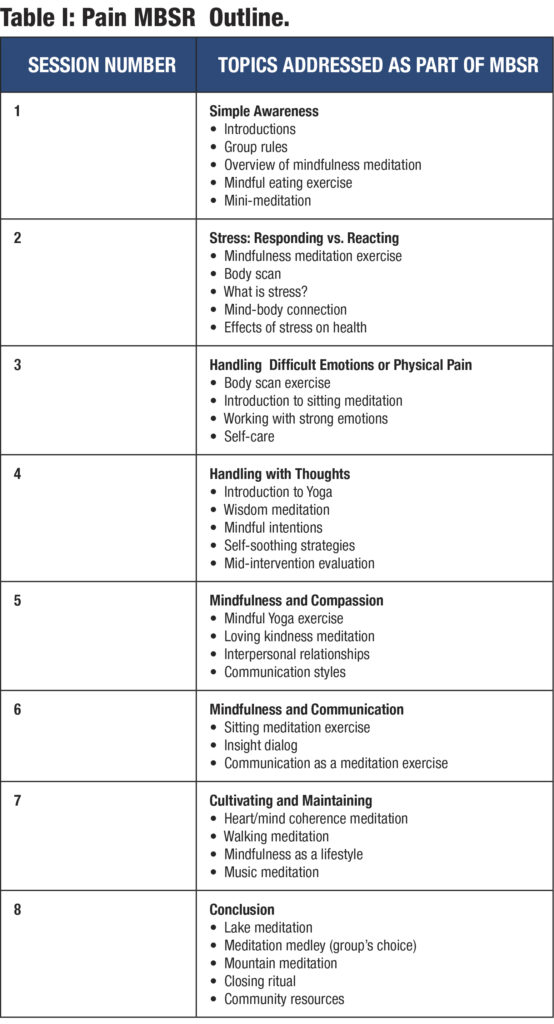
MBSR Techniques for Chronic Pain Management
Body scan meditation for pain awareness
The body scan meditation is a foundational practice in MBSR that helps individuals develop a deeper awareness of their bodily sensations. This technique involves mentally scanning the body from head to toe, bringing attention to different areas and noticing any sensations or discomfort that arise.
By regularly practicing the body scan, chronic pain patients can become more attuned to their bodies and gain insight into the specific areas or patterns of pain they experience. This awareness can help them respond more effectively to pain, practicing self-care and taking appropriate action to manage their symptoms.
Breath awareness exercises to manage pain flare-ups
Breath awareness exercises are simple yet powerful techniques that can be used to manage pain flare-ups in daily life. These exercises involve bringing attention to the breath and observing its natural rhythm and sensations.
During a pain flare-up, individuals can bring their focus to their breath to help ground themselves and create a sense of calm. They can practice slow, deep breathing, allowing the exhale to be longer than the inhale, which can activate the body’s relaxation response and reduce stress.
By incorporating breath awareness exercises into their daily routine, chronic pain patients can develop a valuable tool for managing pain and stress in real-time.
Gentle yoga and movement for pain relief
Gentle yoga and movement practices are integral components of MBSR and can provide significant relief for chronic pain sufferers. These practices involve gentle stretching, strengthening, and relaxation exercises that are tailored to accommodate individual abilities and limitations.
Yoga poses and movements can help improve flexibility, balance, and body awareness. They can also promote relaxation and release tension in the muscles and joints, reducing pain and stiffness. The emphasis on mindful movement in yoga helps individuals develop a deeper connection between the body and mind, facilitating self-regulation and pain management.
By integrating gentle yoga and movement into their daily routine, chronic pain patients can experience improved physical function, reduced pain intensity, and an increased sense of well-being.
Psychological Benefits of MBSR
Reducing anxiety and depression related to chronic pain
Chronic pain often coexists with high levels of anxiety and depression. The constant pain and limitations it imposes can significantly impact an individual’s mental health, leading to increased stress, worry, and feelings of sadness or hopelessness.
MBSR has been shown to be effective in reducing symptoms of anxiety and depression in chronic pain patients. By cultivating mindfulness and developing a non-judgmental awareness of their thoughts and emotions, individuals can gain a greater sense of control over their mental well-being.
The practice of mindfulness promotes a more positive relationship with pain, reducing feelings of anxiety and helplessness. By learning to accept and approach their pain with compassion, chronic pain patients can experience a significant reduction in psychological distress and an improved quality of life.
Cultivating self-compassion and acceptance
Living with chronic pain can be emotionally challenging, often leading to self-criticism and a sense of personal failure. MBSR encourages individuals to cultivate self-compassion and acceptance towards themselves and their pain.
Through mindfulness practices, chronic pain patients learn to cultivate a kind and caring attitude towards themselves, acknowledging their suffering without judgment. This self-compassionate approach allows individuals to offer themselves support and care, fostering emotional resilience and well-being.
By practicing self-compassion and acceptance, individuals can break free from negative thought patterns and develop a more positive and compassionate relationship with themselves and their pain.
Enhancing emotional well-being in chronic pain patients
Emotional well-being is a crucial aspect of overall health and plays a significant role in chronic pain management. MBSR offers various techniques and practices that can enhance emotional well-being in chronic pain patients.
By developing mindfulness skills, individuals gain a greater ability to observe their emotions without getting overwhelmed by them. This allows them to respond to emotional challenges with more resilience and clarity, reducing the impact of stressful or negative emotions on pain perception.
The sense of community and support fostered in MBSR programs also contributes to emotional well-being. By connecting with others who share similar experiences, chronic pain patients can feel validated, understood, and less isolated in their journey.
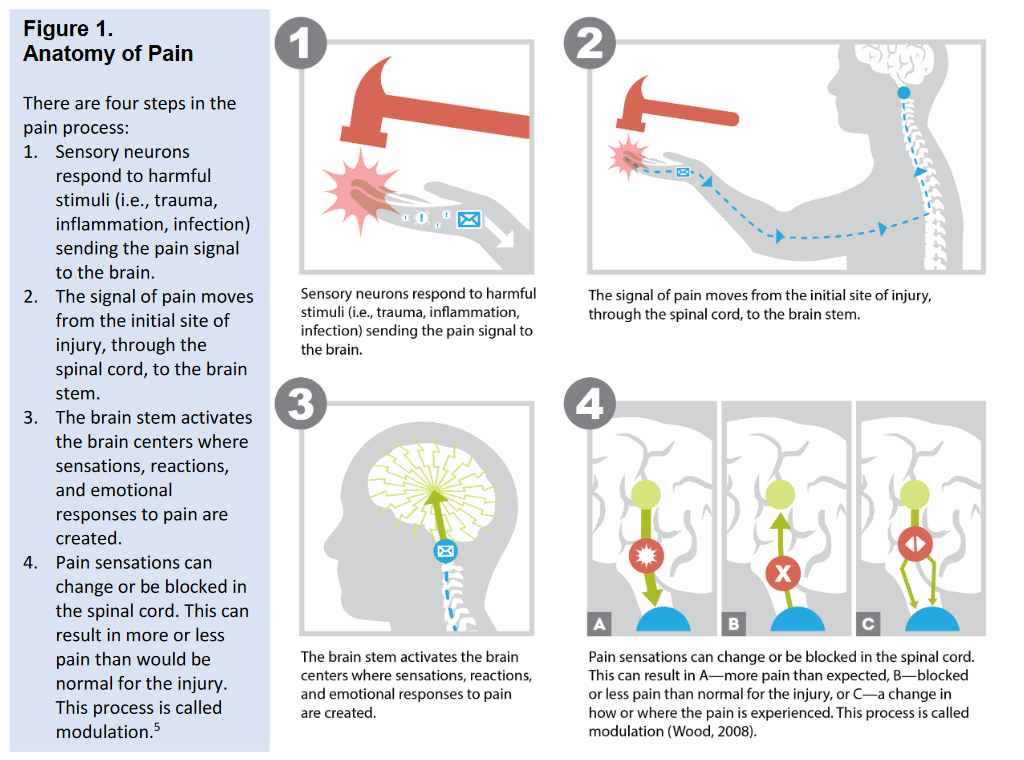
Physical Benefits of MBSR
Improving sleep quality in chronic pain patients
Chronic pain can significantly impact sleep quality, leading to difficulties falling asleep, staying asleep, or experiencing restorative sleep. Sleep disturbances can further exacerbate pain perception and negatively affect overall well-being.
MBSR has been shown to improve sleep quality in chronic pain patients. By incorporating mindfulness practices into their bedtime routine, individuals can create a sense of relaxation and calm before sleep. The practice of mindfulness helps quiet the mind and release tension in the body, promoting better sleep.
By improving sleep quality, chronic pain patients can experience increased energy levels, better pain management, and an overall improvement in their quality of life.
Enhancing immune system functioning
Chronic pain and stress can weaken the immune system, making the body more susceptible to infections and inflammation. MBSR has been found to enhance immune system functioning in chronic pain patients, promoting overall health and well-being.
The practice of mindfulness helps reduce stress hormones, such as cortisol, and activates the body’s relaxation response. This leads to a decrease in inflammation and a strengthening of the immune system.
By incorporating MBSR into their daily routine, chronic pain patients can support their immune system and enhance their body’s natural ability to heal.
Reducing inflammation and its impact on pain perception
Inflammation is a common factor in chronic pain conditions, contributing to pain sensitivity and amplification. Chronic stress and negative emotions can further increase inflammation levels, exacerbating pain perception.
MBSR has been shown to reduce inflammation levels in the body, leading to decreased pain intensity and improved overall well-being. By practicing mindfulness techniques, chronic pain patients can downregulate their body’s inflammatory response, promoting pain relief and symptom management.
By integrating MBSR into their pain management routine, individuals can address the underlying inflammation contributing to their chronic pain and experience long-term relief.
Social Support and Community in MBSR
Group therapy and support in MBSR programs
MBSR programs often involve group therapy sessions, providing participants with a supportive community to share their experiences and challenges. These group sessions offer a safe space for individuals to express themselves, receive validation, and learn from others’ perspectives.
Group therapy in MBSR programs fosters a sense of belonging and connection, reducing feelings of isolation and promoting social support. Chronic pain patients can benefit from connecting with others who understand their unique struggles and challenges.
Creating a sense of belonging and empathy
Chronic pain can be a lonely and isolating experience, as others may struggle to fully comprehend the impact it has on daily life. MBSR fosters a sense of belonging by providing a community of like-minded individuals who share similar experiences.
By participating in MBSR programs, chronic pain patients can gain a sense of connection and empathy. They can share their stories, listen to others, and feel understood and supported. This sense of belonging can make a significant difference in their overall well-being and ability to cope with pain.
Sharing experiences and building resilience together
In MBSR programs, participants have the opportunity to share their experiences, challenges, and successes with others. This shared experience creates a sense of solidarity and can serve as a source of inspiration and motivation.
By listening to others’ stories and witnessing their resilience, chronic pain patients can gain a fresh perspective on their own journey. They can learn new coping strategies, gain hope, and build resilience together with their peers.
The positive social support and community aspect of MBSR programs contribute to improved well-being, reduced stress, and an increased ability to manage chronic pain.
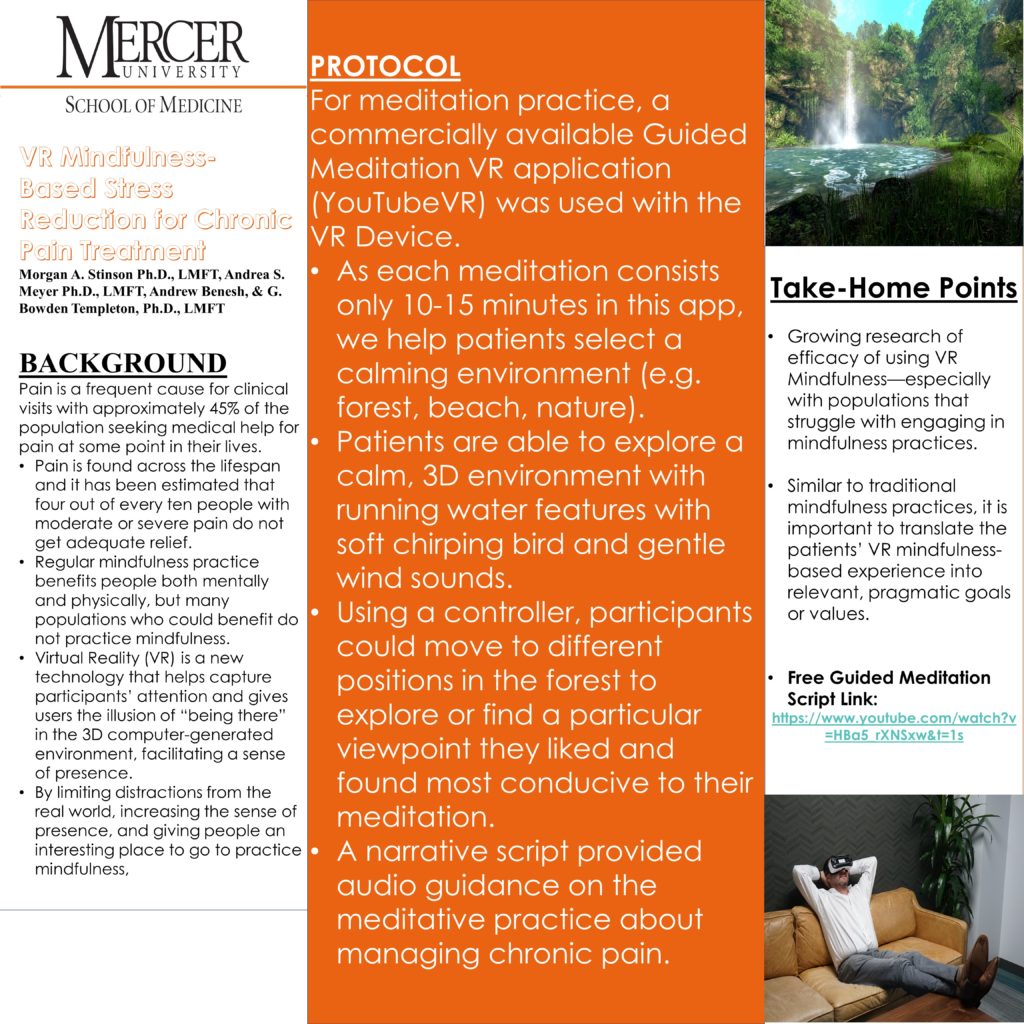
MBSR as a Complementary Approach to Pain Management
Integrating MBSR with traditional medical treatments
MBSR is not intended to replace traditional medical treatments for chronic pain but rather serves as a complementary approach. It is essential for individuals with chronic pain to work closely with their healthcare providers to develop a comprehensive treatment plan that addresses both the physical and psychological aspects of their condition.
By integrating MBSR with traditional medical treatments, chronic pain patients can experience a more holistic approach to pain management. The mindfulness techniques learned in MBSR can enhance the effectiveness of other treatments, such as medication, physical therapy, or surgery.
Collaborative healthcare and multidisciplinary pain management
Chronic pain often requires a multidisciplinary approach, involving various healthcare professionals working together to provide comprehensive care. MBSR aligns well with this collaborative model, as it can be integrated into multidisciplinary pain management programs.
By incorporating MBSR into a comprehensive pain management plan, individuals benefit from the expertise and support of healthcare professionals from different disciplines. This collective approach can lead to more effective pain management, improved quality of life, and better overall well-being.
Reducing reliance on pain medication through mindfulness practices
One of the significant advantages of MBSR for chronic pain management is the potential to reduce reliance on pain medication. Mindfulness practices can help individuals develop alternative strategies for pain relief, reducing the need for high doses of pain medication that may have adverse side effects.
By practicing mindfulness and employing the techniques learned in MBSR, chronic pain patients can develop a greater ability to cope with pain naturally. The non-pharmacological approach of MBSR offers a safe and effective method for managing pain without relying solely on medication.
MBSR for Preventing Chronic Pain
Early interventions and mindfulness-based approaches
MBSR can be a valuable tool in preventing the development of chronic pain conditions. Early interventions and mindfulness-based approaches can help individuals address acute pain or stressful situations, reducing the likelihood of the pain becoming chronic.
By learning mindfulness techniques and practicing them regularly, individuals can develop better stress management skills, emotional resilience, and awareness of their bodies. These factors play a crucial role in preventing the transition from acute to chronic pain.
Paying attention to stress and pain triggers
MBSR emphasizes the importance of paying attention to stress and pain triggers to prevent the development of chronic pain. By noticing the early warning signs and addressing them promptly, individuals can reduce the likelihood of the pain becoming chronic.
Through mindfulness practices, individuals learn to cultivate an increased level of self-awareness. This helps them recognize the early signs of stress or pain, allowing them to take action and prevent further escalation.
Preventing the development of chronic pain conditions
Chronic pain can be prevented by adopting a proactive approach to self-care and stress management. MBSR provides individuals with the tools and techniques necessary to cultivate a healthy lifestyle, manage stress effectively, and reduce the risk of developing chronic pain conditions.
By practicing mindfulness in daily life and incorporating MBSR techniques into their routine, individuals can create a solid foundation for preventing chronic pain. Mindfulness helps individuals develop resilience, emotional well-being, and a positive mindset, reducing the risk of chronic pain and enhancing overall quality of life.
Challenges and Limitations of MBSR for Chronic Pain
Adherence and commitment to regular practice
One of the potential challenges with MBSR is maintaining adherence and commitment to regular practice. MBSR requires individuals to carve out time each day for formal meditation practice and incorporate mindfulness into daily life.
To experience the full benefits of MBSR, it is crucial to establish a regular practice routine and dedicate time consistently. This can be challenging for some individuals who may struggle to find the time or motivation to practice regularly.
However, with the support of the MBSR community and by reminding oneself of the potential benefits, individuals can overcome these challenges and make mindfulness an integral part of their pain management routine.
Addressing skepticism and misconceptions about mindfulness
Mindfulness may be a relatively new concept for some individuals, and skepticism or misconceptions about its effectiveness can arise. Some people may view it as a “fad” or question its scientific validity.
It is essential to create awareness about the growing body of research supporting mindfulness and its efficacy in chronic pain management. Informing individuals about the potential benefits and providing them with accurate information can help address skepticism and promote informed decision-making.
Individual variations in response to MBSR
Like any treatment approach, the response to MBSR for chronic pain management can vary from person to person. While many individuals experience significant relief and improvements in their pain and overall well-being, some may have a more limited response.
It is important to recognize that individuals may respond differently to mindfulness-based interventions and to tailor treatment plans and expectations accordingly. A personalized approach, in collaboration with healthcare providers, can help individuals maximize the benefits they derive from MBSR.
Tips for Incorporating Mindfulness into Daily Life
Mindful eating for pain management
Mindful eating is one practical way to incorporate mindfulness into daily life and promote pain management. By paying attention to the taste, texture, and sensations of food, individuals can enhance their eating experience and cultivate a greater connection with their bodies.
During meals, take time to savor each bite, chewing slowly and mindfully. Notice the flavors, smells, and textures of the food. Be fully present with your meal, allowing yourself to experience nourishment and satisfaction.
Mindful eating can help individuals develop a healthier relationship with food and reduce emotional eating, which may contribute to increased pain and discomfort.
Bringing mindfulness into work and daily routines
Incorporating mindfulness into work and daily routines can help individuals manage stress and pain more effectively. Mindfulness can be practiced during simple activities such as washing dishes, walking, or doing household chores.
Throughout the day, take moments to pause and bring your attention to the present moment. Notice the sensations of your body, the sounds around you, and the quality of your breath. By bringing mindfulness into daily routines, individuals can develop a greater sense of balance, calm, and resilience.
Cultivating mindfulness in relationships
Mindfulness can also enhance interpersonal relationships by improving communication and fostering empathy and understanding. By practicing mindful listening, individuals can be fully present and attentive when engaging in conversation with others.
When interacting with loved ones or colleagues, take a moment to truly listen, allowing the speaker’s words to sink in without judgment or interruption. By practicing mindfulness in relationships, individuals can cultivate deeper connections and support, which can be valuable in managing chronic pain.
The Future of MBSR in Chronic Pain Management
Advancements in neuroscientific research and understanding
Advancements in neuroscientific research and understanding have the potential to further enhance our understanding of the mechanisms underlying the beneficial effects of MBSR on chronic pain management. Neuroscience studies can provide insights into the neuroplasticity of the brain and how mindfulness practice can impact pain perception and cognitive functions.
Ongoing research may explore the specific brain regions and neural pathways affected by mindfulness practice, shedding light on the underlying mechanisms of MBSR’s effectiveness. This deeper understanding can inform the development of more targeted and personalized mindfulness interventions for chronic pain patients.
Integrating MBSR into healthcare systems
As the evidence supporting the efficacy of MBSR continues to grow, there is an increasing recognition of its potential as a valuable tool in healthcare systems. Integrating MBSR into traditional medical settings, such as hospitals and clinics, can provide individuals with access to these programs as part of their standard care.
By integrating MBSR into healthcare systems, individuals with chronic pain can benefit from the expertise of healthcare professionals and receive a more comprehensive and holistic approach to pain management. This integration also allows for better coordination and collaboration among different healthcare providers, ensuring continuity of care for patients.
Empowering patients through self-management of chronic pain
MBSR empowers individuals by providing them with the skills and tools necessary to manage their chronic pain effectively. By practicing mindfulness and incorporating the techniques learned in MBSR into their daily lives, individuals become active participants in their pain management journey.
Empowering patients through self-management reduces reliance on external interventions, such as medication, and promotes independence and self-efficacy. By taking an active role in their pain management, individuals can experience greater control over their symptoms and an improved quality of life.
Conclusion
Mindfulness-Based Stress Reduction (MBSR) offers a holistic solution for chronic pain management. By incorporating mindfulness techniques and practices into their lives, individuals with chronic pain can experience numerous benefits that address the physical, psychological, and social aspects of pain.
MBSR has shown promising results in reducing pain intensity, improving physical functioning, and enhancing overall well-being. It promotes a positive mindset, cultivates self-compassion, and helps individuals develop effective strategies for managing pain and stress.
By integrating MBSR into traditional medical treatments and adopting a collaborative and multidisciplinary approach, individuals can enhance their pain management and reduce reliance on medication. MBSR also holds promise in preventing the development of chronic pain conditions by promoting self-care, stress management, and early interventions.
The transformative impact of mindfulness on pain perception and quality of life cannot be overstated. It offers chronic pain sufferers a path towards increased self-awareness, emotional well-being, and resilience.
Encouraging further research, education, and implementation of MBSR in healthcare systems is essential for providing individuals with chronic pain access to this valuable and effective approach. By embracing the potential of MBSR, we can revolutionize chronic pain management and empower individuals to take control of their pain and improve their overall well-being.

